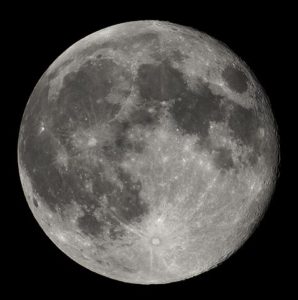
China has said that it is working to launch a lunar space probe, Chang’e-5, before the end of the year. The mission aims to bring back samples from the moon.
The state media of China is being described as China’s reply to U.S. President Donald Trump’s ambitions to revitalize U.S. space exploration.
According to government officials, scientists are performing final round of tests on Chang’e-5 lunar probe, and expect it to be on standby for launch from August. Hu Hao, an official from China’s Lunar Exploration Programme, describes the mission as “one of China’s most complicated and difficult space missions” in which the probe would gather samples from moon and then take off from the surface to make a high-speed reentry to the Earth’s atmosphere.
Last month, the state-run People’s Daily newspaper had citing the China Aerospace Science and Technology Corporation (CASC) – the main contractor for China’s space program to reveal that China is planning to launch Chang’e-5 in November this year.
According to CASC, this will be China’s first automated moon surface sampling mission and first moon take-off mission. Moreover, it will be the first time that China will go for an unmanned docking in a lunar orbit about 3.80 lakh km from earth. This will also be the first return flight in a speed close to second cosmic velocity.
China will use a heavy-lift Long March 5 rocket for the launch that will be done from Wenchang Space Launch Centre in Hainan Province. The payload capacity of this rocket is only slightly less than the Delta IV Heavy. Delta IV Heavy is currently the most powerful rocket in the world and can carry over 28 tons of payload to low-Earth orbit.
Chang’e-5 would be the first lunar sample return mission since the Soviet Union’s Luna 24 in 1976. Chang’e-5 would also be China’s fourth moon mission. China has already accomplished successful launch of two lunar orbiters—Chang’e-1 and 2—and one lander—Chang’e-3, which soft landed a rover on moon’s surface in 2013.
In Chang’e-5 mission, the lander will collect samples and put them in a vessel in the ascender. The ascender will then take off from the moon and dock with the orbiter and the returner. All three will then return back to Earth with samples.
In December 2016, China’s State Council Information Office revealed its plan – in a white paper – for its ambitious space program, announcing it seeks to be the world’s first country to soft land a probe on the far side of the moon in 2018. According to the Office, Chang’e-4 spacecraft would be used for this mission to help better understand the evolution of the moon. This mission will also carry out an in situ and roving detection and relay communications at earth-moon L2 point.
In October 2016, two Chinese astronauts successfully arrived at Tiangong 2 space station and stayed there for 30 days, according to China’s official news agency Xinhua. The crew arrived at the space station through Shenzhou (Divine Vessel) 11 manned spacecraft which docked with the space lab on October 19.
According to experts, that mission was a preparation for the extensive plans of the Chinese space mission. In 2013, three Chinese astronauts had spent 15 days in orbit in a manned mission and docked with Tiangong 1 space lab.

